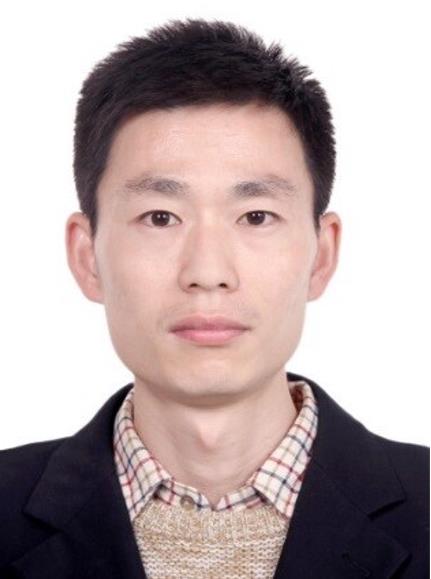
Principal Investigator,Professor :
Novel natural product discovery, antibiotics, and anti-infectives
Microbial natural products are the major source of antibiotics and anti-infectives, and those of novel skeletons are urgently needed due to the prominence of global antibiotic resistance. Biosynthetic gene clusters (BGCs) of known types, or those yet-to-be defined in particular, constitute the vast genetic pool for this purpose and can be accessed by activation in situ or heterologous expression. However, methods or strategies, albeit some have been developed, remain to be unmet to unveil the “hidden” classes of BGCs nor to activate them thereafter. Here we focus on—
1) Strategic genome mining. Sequence pattern-independent algorithms and other non-rule-based (e.g., self-resistance) strategies for genome mining and BGC prioritization.
2) Super large DNA cloning technology. The key for BGC cloning is the physical circularization step when it gets extremely larger. Aiming at this, a matched technology for cloning BGCs up to 100 kb has been developed, and demonstrated to be of high efficiency, success rate, and ease of operation more importantly. Therefore, to clone large BGCs, both known and unknown ones, should be much easier than ever before.
Iterative type I polyketide synthases (iT1PKSs), medium-chain fatty acids, biofuels, and designer molecules
The iT1PKSs are historically found to be prominent in fungi and capable of synthesizing a large amount and extreme diversity of fungal polyketides. But we recently revealed that bacteria are also gifted at harboring abundant iT1PKSs. However, the most intriguing trait, the programming of iterativity, keeps mysterious ever since the early stages of the study of fatty acid synthase (FAS). Here we aim at revitalizing this field with our unique insights and efforts—
1) Characterize more bacterial iT1PKSs. As analyzed, bacteria encode much more subtypes of iT1PKSs than fungi do. In order to better learn and use iT1PKSs for synthetic biology applications, e.g., providing diversified fatty acid precursors for whole cell synthesis of lipopeptide antibiotics, more are to be characterized for the enzyme toolkit construction.
2) Go deep into the iterativity mechanism. Less effective was proved to investigate the iterativity mechanism simply by domain-swapping or substrate-spectra assays. To better learn the selective/skipping catalysis requires insights and delicate designs down to the molecular level, maybe more than the steric effect.
3) Engineer to produce biofuels and antibiotic precursors. Fatty acid-derived biofuels are mainly produced by the native microbial FAS coupled with chain-length altered thioesterase (TE), which, however, would in the end sacrifice the producers’ growth and need to externally add fatty acids as supportive. Similarly, antibiotics of the lipopeptides require the producers to provide structurally diverse medium-chain fatty acids or derivatives thereof, which often happens to be the limiting factor. Employing iT1PKSs from the established enzyme toolkit or their modified versions would otherwise not interfere with the native fatty acid pathways and thus could theoretically support production of biofuels and lipopeptides in large amount.
4) Make designer molecules. Leveraging the mechanism of iterativity programming, an infinite possibility of a polyketide structure could be designed and realized.
Enzyme catalysts and the green chemistry
The global aspiration for more sustainable processes has contributed to the boost of the use of enzymes. And the microbial secondary metabolism is a rich source of unique enzymes, capable of catalyzing various chemical reactions, and could be used as an alternative to the chemical catalysis. As a strength, 1) we established the large DNA cloning technology which could readily activate special BGCs and access their products; 2) for intriguing enzymatic reactions, we are also experienced in reconstituting the in vitro assays and systematic scaling-up, as well as application of directed evolution for those of industrial prospect.
1 Behnam Enghiad#, Chunshuai Huang#, Fang Guo, Guangde Jiang, Bin Wang, S. Kasra Tabatabaei, Teresa A. Martin, and Huimin Zhao*. Cas12a-assisted precise targeted cloning using in vivo Cre-lox recombination. Nat. Commun. 2021 12(1): 1171.
2 Bin Wang, Fang Guo, Chunshuai Huang, and Huimin Zhao* (2020). Unraveling the iterative type I polyketide synthases hidden in Streptomyces. Proc. Natl. Acad. Sci. U. S. A.: 201917664.
3 Bin Wang, and Huimin Zhao*. Unleashing the power of energy storage: Engineering β-oxidation pathways for polyketide production. Synth. Syst. Biotechnol. 2020 5(1): 21-22.
4 Bin Wang, Fang Guo, Shi-Hui Dong, and Huimin Zhao* (2019). Activation of silent biosynthetic gene clusters using transcription factor decoys. Nat. Chem. Biol. 15(2): 111-114.
5 Bin Wang#, Hengqian Ren#, Qiqi Tian, and Huimin Zhao* (2019). Activation of silent natural product biosynthetic gene clusters using synthetic biology tools. Comprehensive Natural Products III; Elsevier: 113-135.
6 Todd S. Freestone, Kou-San Ju, Bin Wang, and Huimin Zhao* (2017). Discovery of a phosphonoacetic acid derived natural product by pathway refactoring. ACS Synth. Biol. 6(2): 217-223.
7 Guohui Pan#, Xiaoqin Gao#, Keqiang Fan#, Junlin Liu, Bing Meng, Jinmin Gao, Bin Wang, Chaobo Zhang, Hui Han, Guomin Ai, Yihua Chen, Dong Wu*, Zhi-Jie Liu*, and Keqian Yang* (2017). Structure and function of a C–C bond cleaving oxygenase in atypical angucycline biosynthesis. ACS Chem. Biol. 12(1): 142-152.
8 Hengqian Ren#, Bin Wang#, and Huimin Zhao* (2017). Breaking the silence: new strategies for discovering novel natural products. Curr. Opin. Biotechnol. 48: 21-27.
9 Fang Guo#, Sihai Xiang#, Liyuan Li, Bin Wang, Johanna Rajas?rkk?, Kirsi Gr?ndahl-Yli-Hannuksela, Guomin Ai, Mikko Mets?-Ketel?, and Keqian Yang* (2015). Targeted activation of silent natural product biosynthesis pathways by reporter-guided mutant selection. Metab. Eng. 28: 134-142.
10 Bin Wang#, Fang Guo#, Jinwei Ren, Guomin Ai, Bertrand Aigle, Keqiang Fan*, and Keqian Yang* (2015). Identification of Alp1U and Lom6 as epoxy hydrolases and implications for kinamycin and lomaiviticin biosynthesis. Nat. Commun. 6: 7674.
11 Bin Wang#, Jinwei Ren#, Liyuan Li, Fang Guo, Guohui Pan, Guomin Ai, Bertrand Aigle, Keqiang Fan*, and Keqian Yang* (2015). Kinamycin biosynthesis employs a conserved pair of oxidases for B-ring contraction. Chem. Commun. (Camb.) 51(42): 8845-8848.